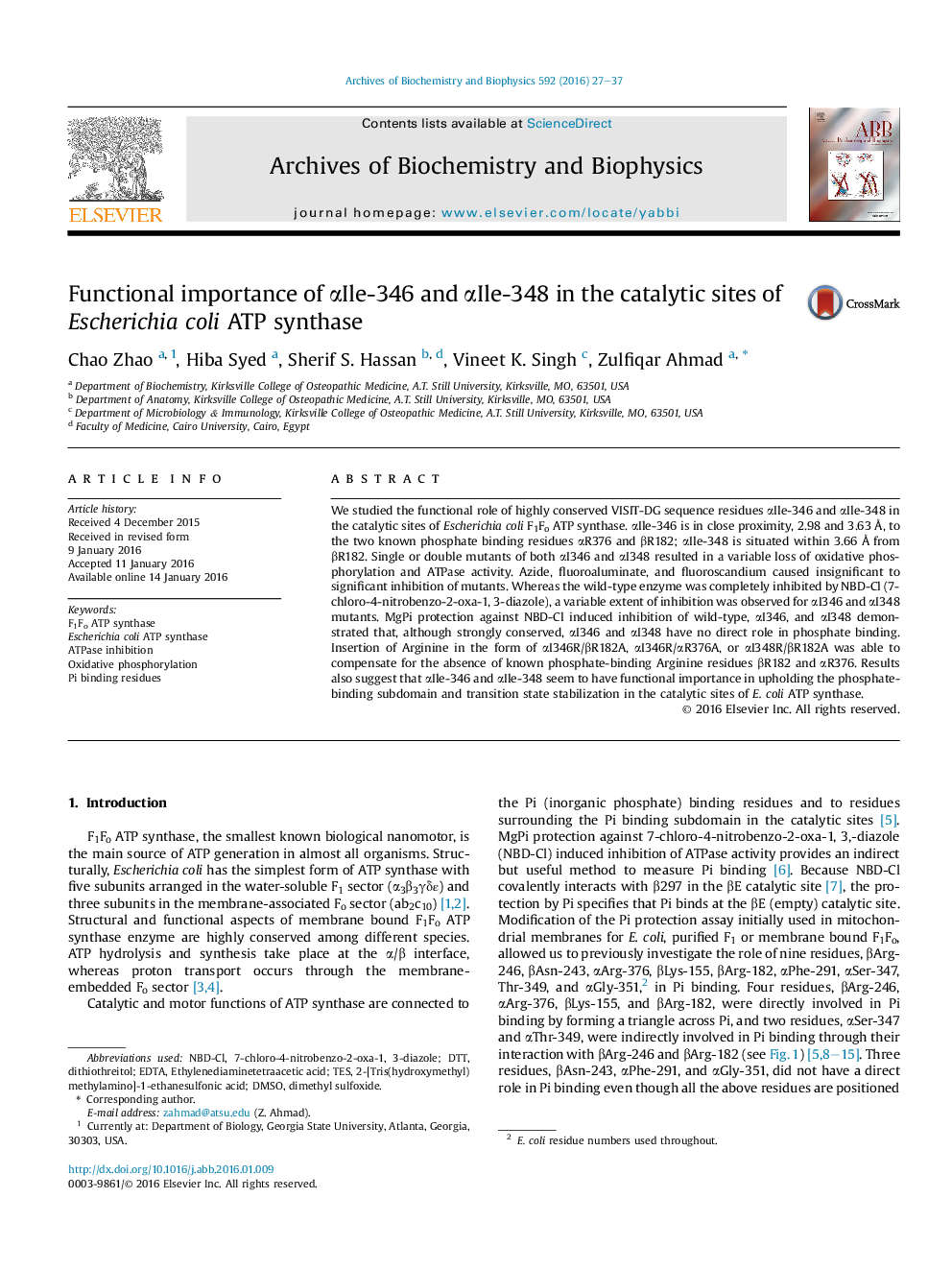| Article ID | Journal | Published Year | Pages | File Type |
|---|---|---|---|---|
| 1924796 | Archives of Biochemistry and Biophysics | 2016 | 11 Pages |
Abstract
We studied the functional role of highly conserved VISIT-DG sequence residues αIle-346 and αIle-348 in the catalytic sites of Escherichia coli F1Fo ATP synthase. αIle-346 is in close proximity, 2.98 and 3.63 Ã
, to the two known phosphate binding residues αR376 and βR182; αIle-348 is situated within 3.66 Ã
from βR182. Single or double mutants of both αI346 and αI348 resulted in a variable loss of oxidative phosphorylation and ATPase activity. Azide, fluoroaluminate, and fluoroscandium caused insignificant to significant inhibition of mutants. Whereas the wild-type enzyme was completely inhibited by NBD-Cl (7-chloro-4-nitrobenzo-2-oxa-1, 3-diazole), a variable extent of inhibition was observed for αI346 and αI348 mutants. MgPi protection against NBD-Cl induced inhibition of wild-type, αI346, and αI348 demonstrated that, although strongly conserved, αI346 and αI348 have no direct role in phosphate binding. Insertion of Arginine in the form of αI346R/βR182A, αI346R/αR376A, or αI348R/βR182A was able to compensate for the absence of known phosphate-binding Arginine residues βR182 and αR376. Results also suggest that αIle-346 and αIle-348 seem to have functional importance in upholding the phosphate-binding subdomain and transition state stabilization in the catalytic sites of E. coli ATP synthase.
Keywords
Related Topics
Life Sciences
Biochemistry, Genetics and Molecular Biology
Biochemistry
Authors
Chao Zhao, Hiba Syed, Sherif S. Hassan, Vineet K. Singh, Zulfiqar Ahmad,
